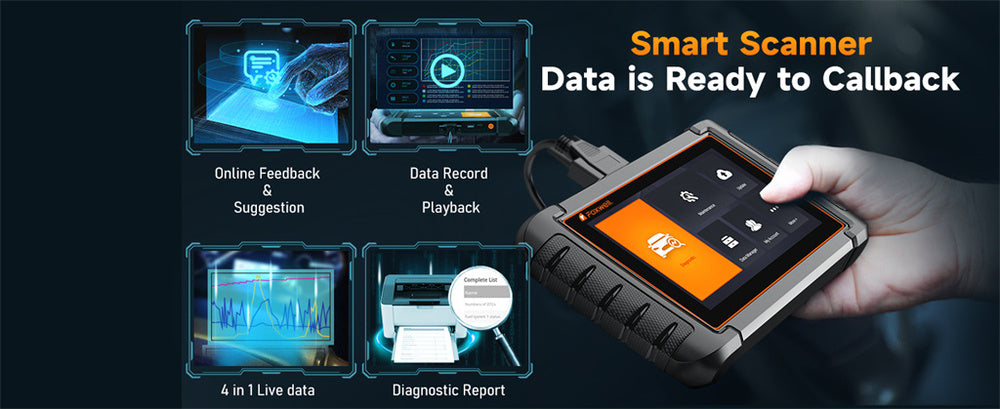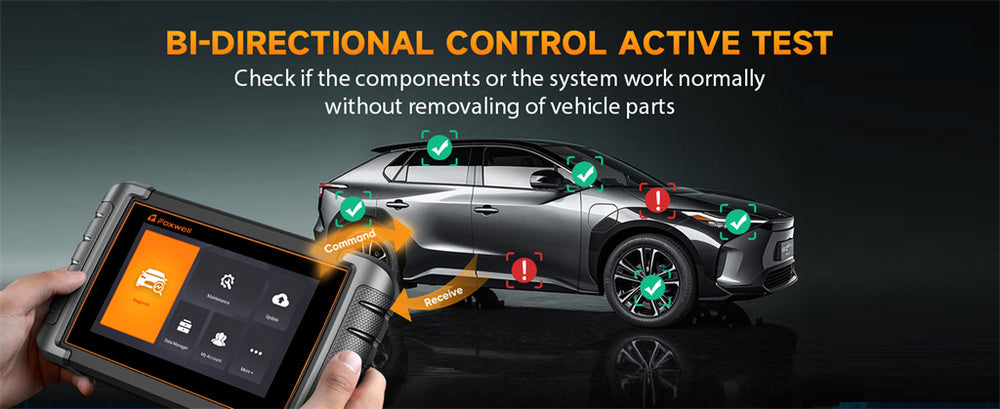When it comes to car maintenance, checking the transmission fluid is a crucial part of keeping your vehicle running smoothly.
Transmission fluid helps with gear shifts, keeps the transmission cool, and ensures everything works as it should.
Many people are familiar with checking the fluid manually, but can you use a scanner to monitor transmission fluid?
Let’s break down how a diagnostic scanner can help with transmission fluid checks, the types of scanners needed, and their limitations.
Can a Diagnostic Scanner Check Transmission Fluid?
Yes, a car diagnostic scanner can check certain aspects of transmission fluid, but it depends on both the vehicle and the type of scanner you're using.
In modern vehicles, especially those with automatic transmissions, the Transmission Control Module (TCM) manages the transmission’s operations and collects data from various sensors.
These sensors can monitor transmission fluid temperature, pressure, and sometimes provide indications of fluid quality.
However, not every vehicle is set up to offer this data.
Many older vehicles or those with manual transmissions might not have the necessary sensors, and in those cases, you’ll need to check the fluid level and condition manually, using a dipstick or by following the manufacturer's procedure for sealed transmissions.
How Do Scanners Access Transmission Fluid Data?
Scanners access transmission fluid data by connecting to the vehicle’s Transmission Control Module (TCM) through the OBD-II port.
The TCM collects data from various sensors inside the transmission system, which track important parameters like fluid temperature and pressure.
When a scanner is plugged into the OBD-II port, it communicates with the TCM using the vehicle’s CAN bus, which is the network that links all of the car’s control systems.
The TCM can send the transmission fluid data to the scanner, which then displays the information in a readable format.
Not all scanners can access this data, however. Basic OBD-II scanners are generally limited to engine and emissions-related codes.
For transmission fluid data, you need an enhanced or professional-level scanner that can read specific Parameter IDs (PIDs) related to the transmission.
These advanced scanners can pull real-time data about the transmission fluid, such as its temperature and pressure, directly from the TCM, giving you a more complete picture of the transmission’s health.
What Types of Scanners Can Check Transmission Fluid?
To check transmission fluid, a basic OBD-II scanner won't cut it. These scanners are typically limited to engine diagnostics and emissions-related information.
For transmission fluid data, you need a more advanced scanner.
Enhanced diagnostic scanners are designed to read data from the Transmission Control Module (TCM), including transmission fluid temperature, pressure, and trouble codes related to the transmission system.
These scanners can access more detailed information because they are equipped to communicate with the TCM and retrieve specific PIDs related to the transmission.
Professional-level diagnostic tools are even more robust, offering real-time monitoring, diagnostic trouble codes (DTCs), and detailed transmission system insights.
These tools are crucial for identifying issues like overheating or low pressure, both of which can severely affect the performance and longevity of the transmission.
In summary, you’ll need an advanced or professional scanner if you want to check the transmission fluid and understand its current condition.
What Transmission Fluid Information Can a Scanner Provide?

With an advanced diagnostic scanner, you can access several important details about your transmission fluid, including:
Transmission Fluid Temperature: Real-time temperature monitoring is crucial, especially if you’re towing or driving in extreme conditions.
High transmission fluid temperatures can signal that the transmission is overheating, which could lead to serious damage if not addressed quickly.
Fluid Pressure: Maintaining proper transmission fluid pressure is essential for the smooth operation of the transmission.
A scanner can help detect low fluid pressure, which might indicate a leak or a problem with the transmission pump.
Diagnostic Trouble Codes (DTCs): Advanced scanners can pull transmission-related trouble codes, which can help identify issues like poor shifting, overheating, or pressure problems.
These trouble codes often point to underlying issues with the fluid or transmission system that need immediate attention.
While scanners can give valuable data about fluid temperature and pressure, they cannot typically check the fluid level or directly assess the quality of the transmission fluid (e.g., whether it’s dirty or burnt). Those checks still require manual inspection.
Limitations of Checking Transmission Fluid with a Scanner
Although scanners like the Foxwell NT1009 can offer a lot of information about your transmission fluid, they do have their limitations:
Fluid Level: Most scanners cannot measure the actual fluid level.
You’ll still need to check this manually using a dipstick or by following the manufacturer’s specific procedure for vehicles without dipsticks, often found in newer or sealed transmissions.
Fluid Quality: Scanners can’t detect whether the fluid is dirty, burnt, or contaminated.
A visual inspection of the fluid is still necessary to check for discoloration or a burnt smell, both signs that the fluid may need to be replaced.
Vehicle Compatibility: Not all vehicles allow access to transmission fluid data through the OBD-II system.
Older models and some vehicles with manual transmissions may not have the necessary sensors to provide this information, even if you’re using an advanced scanner.
Advanced Tools Required: Basic scanners won’t give you the detailed transmission data you need.
You’ll need an enhanced or professional-level scanner to access the TCM and retrieve the necessary information.

When Should You Use a Scanner vs. Manual Inspection?
While a scanner can be a helpful tool for monitoring transmission fluid, there are still situations where a manual inspection is necessary.
Here’s a quick guide on when to use each method:
Use a Scanner When:
- You want to monitor real-time transmission fluid temperature during towing or extreme driving conditions.
- Your car has a sealed transmission without a dipstick, making manual checks more complicated.
- You suspect overheating or pressure problems and need real-time data to diagnose the issue.
- You have a professional-grade scanner that can communicate with the Transmission Control Module (TCM).
Use Manual Inspection When:
- You need to check the actual fluid level, especially in older vehicles with dipsticks.
- You want to assess the quality of the transmission fluid by looking at its color or checking for a burnt smell.
- Your vehicle doesn’t support transmission fluid diagnostics through the OBD-II system.
In many cases, a combination of both methods—using a scanner for detailed diagnostics and a manual check for fluid level and quality—will give you the most accurate understanding of your transmission’s health.
Conclusion
In conclusion, checking transmission fluid with a scanner is possible, but it depends on having the right tool and vehicle.
Enhanced diagnostic scanners can provide essential data such as fluid temperature, pressure, and diagnostic trouble codes, helping you catch potential issues early on. However, for tasks like checking the fluid level or assessing the quality of the fluid, a manual inspection is still necessary.
Whether you’re a DIY mechanic or just want to keep your vehicle in top condition, understanding how to use a scanner alongside manual checks will help ensure your transmission stays in great shape for years to come.
FAQs
Can a scanner detect transmission problems?
Yes, advanced scanners can detect transmission problems by reading diagnostic trouble codes (DTCs) related to the transmission system, such as overheating, fluid pressure issues, or poor shifting.
How do I check my transmission fluid if I don't have a dipstick?
For sealed transmissions without a dipstick, you can use an advanced scanner to monitor fluid temperature and pressure or follow the manufacturer's specific procedure for checking the fluid level, which may involve using a special tool.
Can OBD2 scan transmission?
Yes, but only enhanced OBD-II scanners can access transmission-related data such as fluid temperature, pressure, and diagnostic trouble codes by communicating with the Transmission Control Module (TCM).




Leave a comment
This site is protected by hCaptcha and the hCaptcha Privacy Policy and Terms of Service apply.